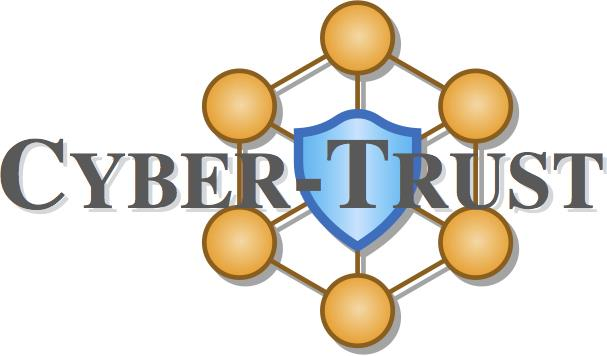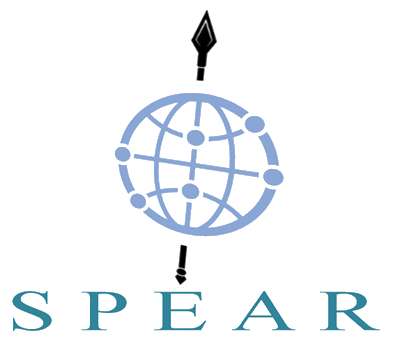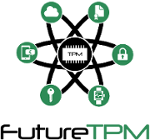Program
Friday, July 3th, 2020The time shown in this schedule is the time in Belgium - Central Europe time zone (GMT+2)
8:30 a.m. – 9:00 a.m.
Registration / SETUP
9:00 a.m. – 9:10 a.m.
Welcome Session
Session Chair: Fulvio Valenza, Politecnico di Torino, Italy
9:10 a.m. – 10:15 a.m.
Keynote speech
Dynamic Security Management on IoT through Network Softwarization
Antonio Skarmeta, University of Murcia, Spain
Abstract – In this presentation we will explore the opportunities that NFV and SDN jointly offer in coping with security threats against IoT services. The envisioned framework has been designed to provide security protection mechanisms through new software-based enablers and to create added-value services accounting for potential integration with existing IoT security mechanisms. Different levels of security policies are defined, so to decouple the desired defense intent from the low-level configuration of the underlying components and to enable a technology-agnostic refinement process. Specific focus concerns the orchestration features, which need to enforce the desired security controls over heterogeneous domains, such as SDN/NFV and IoT networks
Short Bio – Dr Antonio Skarmeta received the M.S. degree in Computer Science from the University of Granada and B.S. (Hons.) and the Ph.D. degrees in Computer Science from the University of Murcia Spain. Since 2009 he is Full Professor at the same department and University. Antonio F. Skarmeta has worked on different research projects in the national and international area in the networking, security and IoT area, like Euro6IX, 6Power, ENABLE, DAIDALOS, SWIFT, SEMIRAMIS, SMARTIE, SOCIOTAL and IoT6. He now coordinates the H2020 project IoTCrawler focusing on IoT advanced discovery on IPv6 networks and OLYMPUS on privacy preserving IdM. His main interested is in the integration of IPv6, security services, identity, IoT and Smart Cities. He has been head of the research group ANTS since its creation on 1995. Actually he is also advisor to the vice-rector of Research of the University of Murcia for International projects and head of the International Research Project Office. Since 2014 until 2010 he has been Spanish National Representative for the MSCA within H2020. He has published over 200 international papers and being member of several program committees. He has also participated in several standardization for a like IETF, ISO and ETSI and being nominated as IPv6 Forum Fellow. Dr Skarmeta it is owner of several patents on telemonitoring based IoT solution. He is also CTO of the spinoff company Odin Solution S.L. (OdinS) in the area of IoT and Smart Infrastructure.
10:15 a.m. – 10:30 a.m.
Break
10:30 a.m. – 12:15 a.m.
Technical Session 1 – Attack Detection and Threat Identification
Session Chair: Panagiotis Sarigiannidis, University of Western Macedonia, Greece
Programmable Data Gathering for Detecting Stegomalware
Luca Caviglione, Matteo Repetto, Marco Zuppelli, CNR - IMATI, Italy
Alessandro Carrega, CNIT - S3ITI, Italy
Impact of Virtual Networks on Anomaly Detection with Machine Learning
Daniel Spiekermann, Polizeiakademie Niedersachsen, Germany
Jorg Keller, FernUniversitat in Hagen, Germany
Detection of Insider Threats using Artificial Intelligence and Visualisation
Vasileios Koutsouvelis, University of Cypru, Cypru
Stavros ShiaelesUniversity of Portsmouth, UK
Bogdan Ghita, Gueltoum Bendiab, Plymouth University, UK
IoT Malware Network Traffic Classification using
Visual Representation and Deep Learning
Stavros Shiaeles, Gueltoum Bendiab, University of Portsmouth, UK
Abdulrahman Alruban, University of Plymouth, UK
Nicholas Kolokotronis, University of Peloponnese, Greece
12:15 a.m. – 1:15 p.m.
Lunch Break
1:15 p.m. – 2:30 p.m.
Technical Session 2 – Security Platforms and Architectures
Session Chair: Riccardo Sisto Politecnico di Torino, Italy
Secure and Private Smart Grid: The SPEAR Architecture
Panagiotis Radoglou Grammatikis, Panagiotis Sarigiannidis, University of Western Macedonia, Greece
Eider Iturbe, Erkuden Rios, Fundacion Tecnalia Research & Innovation, Spain
Antonios Sarigiannidis, Sidroco Holdings, Cyprus
Odysseas Nikolis, Dimosthenis Ioannidis, Center for Research and Technology Hellas, Greece
Vasileios Machamint, Michalis Tzifas, Eight Bells Ltd, Cyprus
Alkiviadis Giannakoulias, European Dynamic, Luxembourg
Michail Angelopoulos, University
of Piraeus , Greece
Anastasios Papadopoulos, Testing Research and Standards Cente, Greece
Francisco Ramos, Schneider Electric, Spain
Christos Dalamagkas, University of Western Macedonia, Greece
Francisco Ramos, Schneider Electric, Spain
Dimitrios Tzovaras, Center for Research and Technology Hellas, Greece
Tooba Hasan, COMSATS University, Pakistan
Akhunzada Adnan, Thanassis Giannetsos, Technical University of Denmark, Denmark
Jahanzaib Malik, NUST University, Pakistan
On the Security of Permissioned Blockchain Solutions for IoT Applications
Sotirios Brotsis
, Nicholas Kolokotronis, University of Peloponnese, Greece
Stavros Shiaeles, University of Portsmouth, UK
Konstantinos Limniotis, Hellenic Data Protection Authority, Greece
2:30 p.m. – 2:45 p.m.
Break
2:45 p.m. – 4:00 p.m.
Technical Session 3 – Prevention and Defense
Session Chair: Michał Choraś FernUniversitat in Hagen, Germany
Introducing programmability and automation in the synthesis of virtual firewall rules
Daniele Bringhenti, Guido Marchetto, Riccardo Sisto, Fulvio Valenza, Jalolliddin Yusupov, Politecnico di Torino, Italy
Attestation of Trusted and Reliable Service
Function Chains in the ETSI-NFV Framework
Antonio Suriano, Domenico Striccoli, Giuseppe Piro, Gennaro Boggia, Politecnico di Bari - CNIT, Italy
Raffele Bolla, Universita di Genova - CNIT, Italy
Collaborative Cyber Attack Defense in SDN
Networks using Blockchain Technology
Thomas Bauschert, Mehrdad Hajizadeh
Technical University of Chemnitz, Germany
Nima Afraz, Marco Ruffini, Trinity College Dublin, Ireland
4:00 p.m. – 5:30 p.m.
Cyber Security EU funded projects
ASTRID – AddreSsing ThReats for virtualIseD services
Fulvio Risso, Politecnico di Torino, Italy
Abstract – The growing adoption of cloud technologies and the trend to virtualise applications are inexorably re-shaping the traditional security paradigms, due to the increasing usage of infrastructures outside of the enterprise perimeter and shared with other users. The ASTRID project aims at shifting the detection and analysis logic outside of the service graph of virtualised services, by leveraging descriptive context models and their usage in ever smarter orchestration logic, hence shifting the responsibility for security, privacy, and trustworthiness from developers or end users to service providers.
Web site: https://www.astrid-project.eu/
CYBER-TRUST – Advanced Cyber-Threat Intelligence, Detection, and Mitigation Platform for a Trusted Internet of Things
Nicholas Kolokotronis, University of Peloponnese, Greece
Abstract – The CYBER-TRUST project aims to develop an innovative cyber-threat intelligence gathering, detection, and mitigation platform to tackle the grand challenges towards securing the ecosystem of IoT devices. The proposed interdisciplinary approach will capture different phases of such emerging attacks, before and after known (even years old) or unknown (zero-day) vulnerabilities have been widely exploited by cyber-criminals to launch the attack. This intelligence information will be used to maintain accurate vulnerability profiles of IoT devices, in accordance with data protection, privacy, or other regulations, and optimally alter their attack surface to minimise the damage from cyber-attacks.
Web site: https://cyber-trust.eu/
SPEAR – Secure and PrivatE smArt gRid
Panagiotis Sarigiannidis, University of Western Macedonia, Greece
Abstract – Information and Communication Technologies (ICT) evolve the conventional electrical grid into the Smart Grid (SG) that provides several advantages and features. Nevertheless, the integration of ICT increases the attack surface of this domain, generating new potential cyberthreats. This paper introduces the Secure and PrivatE smArt gRid (SPEAR) architecture, which constitutes an integrated solution aiming at protecting SG, by enhancing situational awareness, detecting timely cyberattacks, collecting appropriate forensic evidence and providing an anonymous cybersecurity information-sharing mechanism. Moreover, the paper presents how the ARCADE methodology was adopted and used for designing and developing the SPEAR architecture. The components of the SPEAR architecture are introduced and discussed in terms of technical and integration details. Moreover, the technology behind each component is presented in a comparative way compared to the state of art, the current constrains, and the component functionalities.
Web site: https://www.spear2020.eu/
SIMARGL – Secure Intelligent Methods for Advanced Recognition of Malware and Stegomalware
Michał Choraś FernUniversitat in Hagen, Germany
Abstract – SIMARGL is a project co-funded by the European Commission under Horizon 2020 programme, to combat the pressing problem of malware. It aims to tackle the new challenges in the cybersecurity field, including information hiding methods, network anomalies, stegomalware, ransomware and mobile malware.
Web site: https://simargl.eu/
GUARD – Guarantee Reliability and trust for Digital service chains
Matteo Repetto CNR - IMATI, Italy
Abstract – Evolving business models are progressively reshaping the scope and structure of ICT services, with massive introduction of virtualization paradigms and tight integration with the physical environment. Agile composition of digital resources and services into complex business service chains undoubtedly brings more agility in service deployment and operation but also introduces security and privacy concerns that have not been addressed in a satisfactory way yet.
In this context, GUARD develops an open and extensible platform for advanced assurance and protection of trustworthy and reliable business chains spanning multiple administrative domains and heterogeneous infrastructures.
Web site: https://guard-project.eu/
FutureTPM
Silviu Vlasceanu Huawei Munich, Germany
Abstract – The vision of FutureTPM is to provide a new generation of TPM-based solutions, incorporating robust and physically secure Quantum-Resistant (QR) cryptographic primitives (formally verified), to ensure long-term security, privacy and operational assurance in the complex domain of future ICT systems and services. The goal is to enable a smooth transition from current TPM environments, based on traditional cryptography, to systems providing enhanced security through QR cryptographic functions, including secure authentication, encryption and signing functions, thus, turning the host device into a “hardened” security token that may also remain secure long-term against an enhanced threat landscape in quantum computing deployments. This will allow for the generation of secure chains of trust that can be used for, e.g., interacting with cloud services, accessing corporate services and performing banking and eCommerce transactions, etc.
Web site: https://futuretpm.eu/
5:30 p.m. – 5:35 p.m.
Closing
Session Chair: Fulvio Valenza, Politecnico di Torino, Italy



